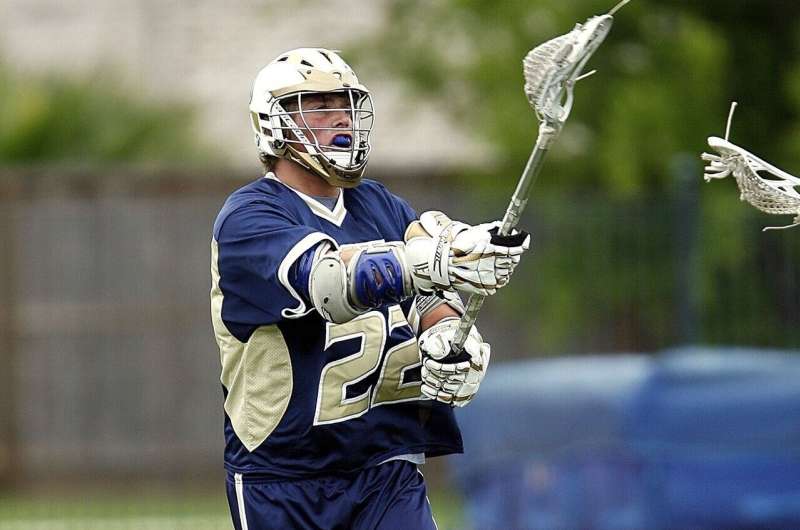This article has been reviewed according to Science X's editorial process and policies. Editors have highlighted the following attributes while ensuring the content's credibility:
fact-checked
peer-reviewed publication
trusted source
proofread
No need to load up on extracurricular activities, study finds

While some ambitious high school students may load up on extracurricular activities to help them get into college, a new study suggests they may be trying too hard.
Researchers at The Ohio State University found that students who participated in one school sport and one other non-sport extracurricular activity were indeed more likely than those who did not have these pursuits to go to college—and to go to more selective colleges, as well.
But participating in two or more extracurricular activities of either type gave no advantage over taking part in just one, according to the study, published recently in PLOS ONE.
"Some people might think that if participating in one extracurricular activity is good, then participating in many must be better. But that is not what we found," said James Tompsett, lead author of the study and a Ph.D. student in sociology at Ohio State.
The data from the study can't say why, but one reason may be that more than one activity just takes too much time, said study co-author Chris Knoester, professor of sociology at Ohio State.
"It's hard to do multiple activities well, and too many may pull you away from academics, which are also obviously very important for getting into college," Knoester said.
"In addition, you may get all the advantages you need from just one good extracurricular activity of each type—which may be very all-consuming, these days."
The findings came from a study that showed how the cumulative advantages of children from well-off families—including their superior access to extracurricular activities—help them get into colleges, and more selective colleges.
The researchers analyzed data from the Educational Longitudinal Survey, a nationally representative sample of high school students. This study included 10,320 students from 682 schools.
The first wave of data was collected in 2002 when the students were in 10th grade. The ELS also collected follow-up data two and four years later.
Results showed that 88% of 12th grade athletes attended any college, compared to 71% of non-athletes. Athletes were also more likely to attend 4-year schools compared to 2-year schools, and likelier to attend a more selective college than non-athletes.
In addition, 87% of students participating in non-sports activities in 12th grade attended college, compared to 71% of those who didn't participate. They were also more likely to attend 4-year schools and more selective colleges.
While this study can't show how out-of-classroom activities help students, other research suggests some reasons, Knoester said.
"Extracurricular activities may help students build character and learn how to persist in the face of challenges—characteristics that can help students succeed in college," Knoester said.
"These activities can also signal to people making college admissions decisions that these students have the traits that are necessary to thrive in college."
But extracurricular activities don't act alone—they are part of a larger pattern that connects a family's socioeconomic status to whether a student goes to college and, if they do, whether they can attend a more selective college, the study showed.
This study measured socioeconomic status based on both parents' education and occupation, as well as family income.
"We found what is pretty obvious: Families with higher socioeconomic status have an important advantage when it comes to college attendance," Tompsett said.
Results showed that 96% of those from the highest socioeconomic status background went to any college, compared to 80% of those from average socioeconomic status backgrounds. Only 57% of those from low socioeconomic backgrounds went on to college.
High socioeconomic status students also were more likely to attend 4-year schools and more selective colleges.
Advantaged backgrounds help young people in a variety of ways, including through the out-of-classroom activities available to them.
"Parents who are higher in socioeconomic status are more likely to enroll their children in extracurricular activities, and they are more likely to live in areas where these extracurricular activities are available," Tompsett said.
In addition, socioeconomic status is related to college expectations, academic achievement scores, and attending well-resourced high schools that together contribute to the cumulative advantage of higher-status families, Knoester said.
"The unequal educational outcomes that we see begin from advantages and disadvantages in the families that children come from," he said. "They affect many of the opportunities that children have, including their access to extracurricular activities."
More information: James Tompsett et al, Family socioeconomic status and college attendance: A consideration of individual-level and school-level pathways, PLOS ONE (2023). DOI: 10.1371/journal.pone.0284188
Journal information: PLoS ONE
Provided by The Ohio State University




















